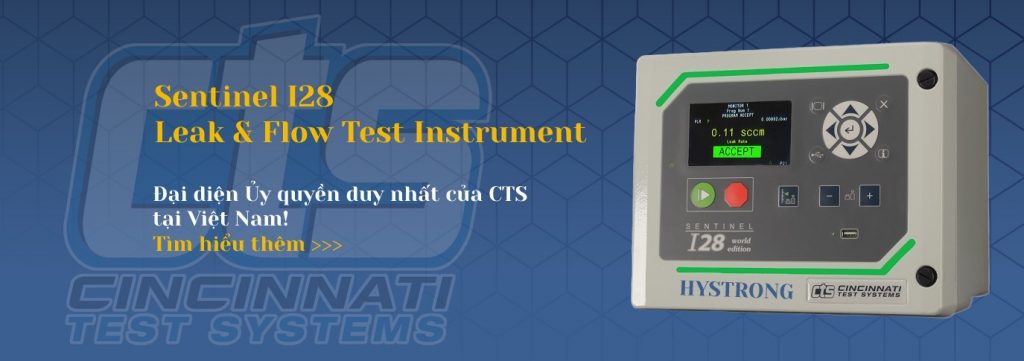All heating, ventilation, and air conditioning (HVAC) systems must be leak-free to operate efficiently and safely. However, leaks can be introduced into the HVAC system during manufacturing and assembly, and older HVAC systems can develop leaks over time. Because many refrigerant leaks are small, they can be difficult to detect unless you understand the different strategies available to detect HVAC leaks
HVAC leaks have many different causes. They can be the result of vibrations, such as in a car’s air conditioner. They can also be due to faulty seals, hoses or valve fittings, or even just normal wear and tear. The constant pressure can also create HVAC leaks. Due to these different causes, different tests may be required to determine the extent of a leak.
Everything leaks under pressure, so you need to detect and measure HVAC leaks starting at the factory by testing key components and making sure they don’t exceed maximum leak specifications. Micro leaks – i.e. small leaks of 0.5 grams per year – can also affect HVAC performance, which is why you need more precise leak testing methods.
Everything leaks under pressure, so you need to detect and measure HVAC leaks starting at the factory by testing key components and making sure they don’t exceed maximum leak specifications. Micro leaks – i.e. small leaks of 0.5 grams per year – can also affect HVAC performance, which is why you need more precise leak testing methods.
Different Leak Tests Have Different Sensitivities
Depending on the type of leak you are trying to detect, you have different leak test options.
For large leaks, the easiest and fastest approach is to use the bubble test. With the bubble or indentation test, you fill the part to be tested with air or gas, then immerse it in water, then look for air bubbles. This is the most basic type of leak detection and will detect larger leaks — typically 4.2 ounces (120 grams) of coolant per year or more.
There are other simple ways to identify leaks in HVAC systems, such as oil stains. Refrigerator coolant contains oil to lubricate the compressor, so if you see oil stains in joints, pipes, or near HVAC equipment, you most likely have a leak.
HVAC systems often develop leaks in the evaporator coils, making them difficult to detect. For more advanced and measurable forms of leak detection, you need a sniffer. A sniffer is a probe that detects the presence of tracer gas, such as leaking coolant. It is also an essential component in tracer gas testing, which is the most accurate way to determine HVAC leaks
Using Tracer Gas Testing for HVAC
HVAC leak testing begins in the factory. Components must be checked for potential leaks during manufacturing, including microscopic leaks that are difficult to detect. The best way to find small leaks is to use a tracer gas test.
If the presence of a larger leak is suspected, it is common practice to use a pressure decay test before the tracer gas test is used. Look for the overall leak first to ensure that a large amount of tracer gas is not released during the leak test, as it may affect the test results. Many CTS customers use TracerMate II because it can control the entire test sequence, starting with the overall leak test, ending with the tracer gas sequence, and all while looking for leaks micro.
During the trace gas leak test performed by TracerMate II, you will evacuate and fill the part with pressurized gas – usually helium – and then use a mass spectrometer gas analyzer to detect any gas leaks from that part. The measurement of trace gas in a controlled environment over time provides a leak rate, which is transmitted from the leak detector to the TracerMate.
Trace gas sniffing testing is the lowest-cost strategy for leak detection in HVAC components because it can detect smaller leaks than pressure decay testing. The final assemblies can be tested using helium or the formed gas accumulation test and the helium hard vacuum test, both of which are specific types of tracer gas tests. To test for leaks in welded fittings and connections, it is best to use a nitriding test.
Measuring Leaks with Nitrogen Purge Testing
The nitrogen purge test, also controlled by TracerMate II, is ideal for testing sub-assemblies and mounting points in HVAC systems. Designed by CTS, this patented tracer gas leak test uses a clamshell that fits around a pipe or joint to create a nitrogen barrier around fittings.
To test for leaks, the sealed clamshell is first submerged in nitrogen to purify the air and create a neutral test environment. The part under test is then vacuumed and compressed with a tracer gas, such as helium. The atmospheric chamber surrounding the seal then detects any helium leaking from the part into the nitrogen test medium using a mass spectrometer.
The nitrogen purge test is ideal for HVAC system testing because it is highly accurate and reduces false leak failures. It also can test for leaks as small as 0.5 grams of refrigerant loss per year. The clamshell design is available in stationary or handheld configurations, so it can test different HVAC systems.
Contact CTS to find the right HVAC leak test solution
There are many aspects to HVAC system leak testing and many types of HVAC leak testing. That is why it is essential to understand how to measure the different types of leaks and microleakages that can occur when inspecting HVAC assemblies and components. Contact the experts at CTS to learn more about HVAC leak testing and find the right leak testing solution for your application.
—-
Hystrong is the Only Authorized Unit of Cincinnati Test Systems (CTS) in Vietnam, with a team of experienced Technicians.
Contact Hystrong Vietnam for advice on installing the most suitable system! Contact now>>>
Facebook: CincinnatiVN
Hotline: (+84) 919-995-040 (call/zalo)


